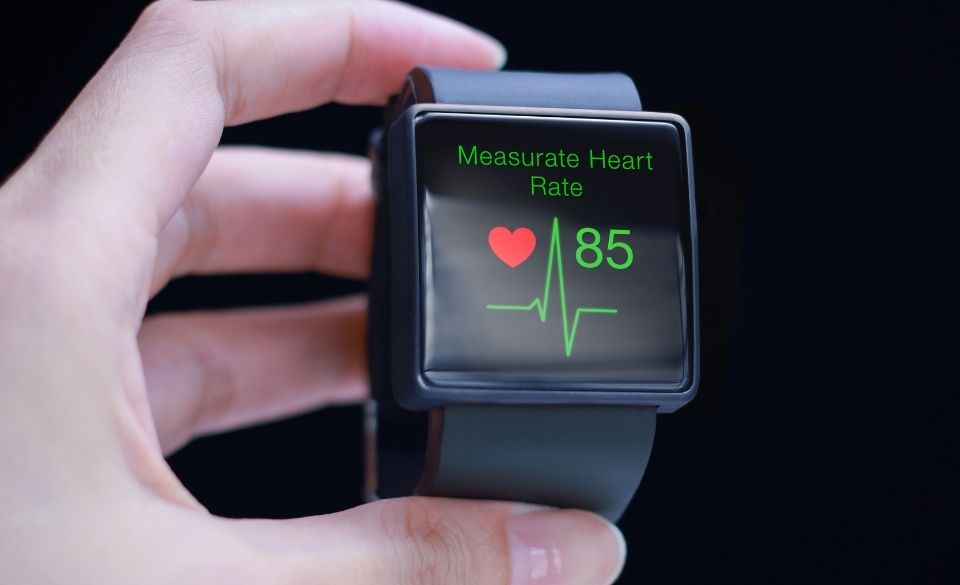
Zone 2 Heart Rate – Everything You Need To Know When Running
Page Contents
Whether you are new to running or a seasoned professional, training by heart rate zones is one of the best ways to monitor how hard you train.
Training by heart rate zones can help prevent you from overtraining, make you are training at the right intensity, and teach you how long you will need to recover between workouts.
An effective training plan combines a mixture of different heart rate zones and different duration and frequencies in these zones.
In this article, we focus on zone 2 heart rate. We discuss how important it is to keep in this zone and how it benefits your running. We also show you different methods to find your zone 2 heart rate.
What Is Your Zone 2 Heart Rate?
Your zone 2 heart rate is classed as a training zone that promotes burning fat, muscular fitness, and capillary density.
When training in this zone, it should feel light and easy. You should be able to perform long endurance runs and shorter ones with a small amount of muscular fatigue afterward.
Because this zone improves your general endurance, most runners spend 2-3 days a week primarily running in this zone. However, other days that include interval sessions, tempo runs, and track sessions, also have sections of zone 2 running in it. For example, the warm-up, recovery, and warm down.
Even though there are multiple ways to calculate a runner’s zone 2 heart rate, the most common way is a calculation based on your maximum heart rate. This is the easiest way for a beginner to get started with heart rate zones.
It is done by working out your maximum heart rate and then calculating 60-70% of this number. For example, if a runner has a maximum heart rate of 200 beats per minute, their zone 2 training zones would be from 120bpm to 140bpm.
However, for this to be accurate you may need to perform a maximum heart rate test.

How To Measure Your Hear Rate Zones?
Even though it is not really accurate, the easiest way to calculate your heart rate zones is by the formula:
Age – 220 = Estimate Maximum Heart Rate
For example, a 60-year-old man would have an estimated max heart rate of 220-60= 160bpm.
To calculate your zone 2 training zones, you would then calculate what 60 and 70% of the 160bpm. This gives us zone 2 training zones of 96bpm to 112bpm.
Take into account this is just an estimate and should be only used as a basic guide for beginners getting started with heart rate training.
The more accurate way is to test your maximum heart rate. This is done by performing a simple workout. There can be variations that can help you reach your maximum heart rate. One of the tests you can do involves a 400m running track.
To do a running maximum heart rate test, follow the guide below:
Before starting any maximum test, make sure your heart rate belt is securing fastened, and your watch is ready to record all the data. Then:
1. Find a 400m running track
2. First, run 4 laps at a tempo pace that makes you work and breathe slightly harder.
4. On the 5th lap, increase your pace even more
5. For the final (6th) lap, push your hardest and run the 400m at your maximum effort for that distance.
Once finished, you should get a relatively accurate maximum heart rate number. Your running watch should tell you the highest heart rate number recorded on the screen. Alternatively, you can upload the data into training peaks, Garmin, or Strava to find your maximum heart rate.
If you are looking for the most accurate way to calculate your maximum heart rate zones, you should have your HR max clinically measured. To do this, you will need to be tested in a laboratory environment with high-tech equipment. The maximum heart rate test will then be tested on a treadmill.

How Often Should You Train In Zone 2?
Once you know your maximum heart rate and have calculated your zone 2 heart rate zones. You can then start thinking about how often you should train in zone 2.
For beginners, zone 2 should be held for runs up to 90 minutes in duration if the goal is to use fat for energy. For the more experienced runner, they will usually go beyond this duration in zone 2. However, these runners are much faster at recovering than newbie runners.
Apart from your long runs, the majority of your other distance runs should be in zone 2. For example, if you are running 6 days a week, your training plan may look something like this:
Monday: Recovery run (zone 1)
Tuesday: Interval Session ( Varying zones)
Wednesday: Distance Run (Zone 2)
Thursday: Distance Run (Zone 2)
Friday: Day off
Saturday: Tempo Run (zone 3)
Sunday: Long run ( Zone 2)
While this is just an example, you can see the majority of the running each week is performed in zone 2. For most people, 3-4 runs a week should be primarily aimed at improving your endurance through zone 2 running.
However, as the session progresses or as you get closer to your goal event, you may reduce the amount of time in zone 2. Even though it will still be the most used training zone, the duration will be less.
The same goes for early session training. After your winter break, you may want to build up your endurance and increase your body’s ability to burn fat again. That means the majority of your runs (4-5 days a week) will be in zone 2.
If you are unsure if you are doing the majority of your training runs in zone 2, log your data online via training software like Garmin, Strava, Trainingpeaks, or Polar. Alternatively, if you don’t have a heart rate monitor, make sure you are running at a level where you can talk and your breathing isn’t laboured. This is a good indication you are close to zone 2.



